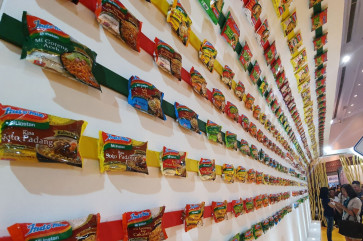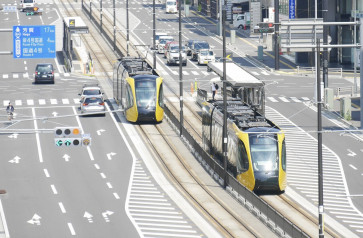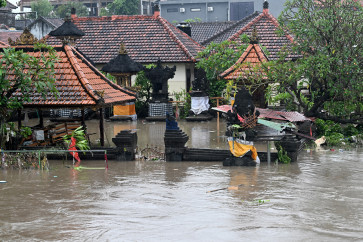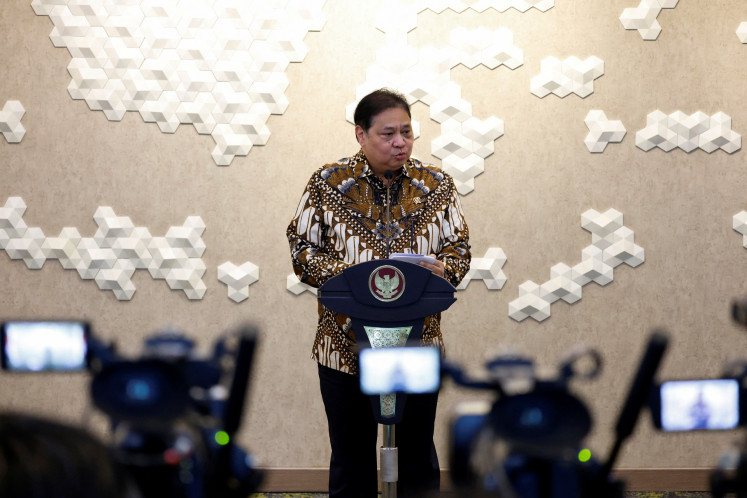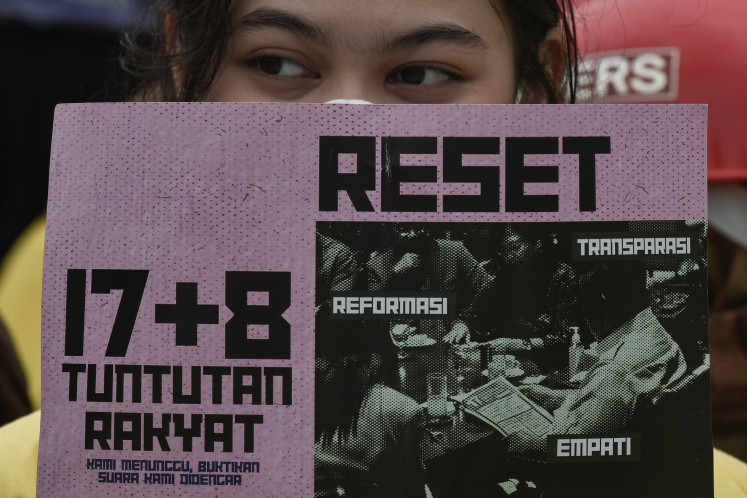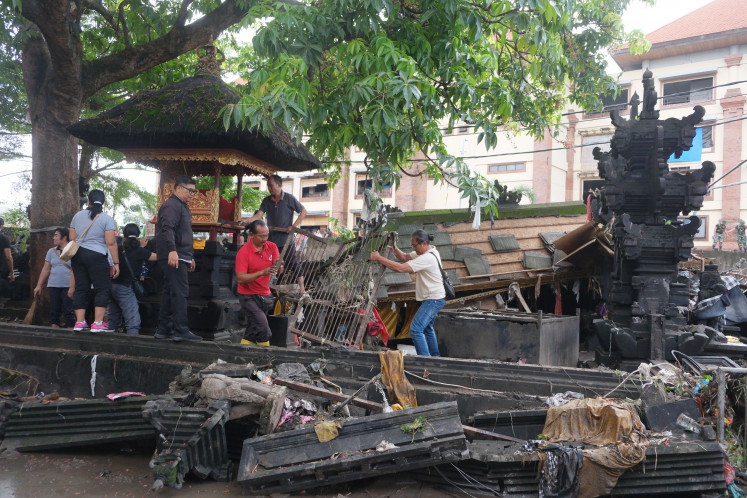Popular Reads
Top Results
Can't find what you're looking for?
View all search resultsPopular Reads
Top Results
Can't find what you're looking for?
View all search resultsOn REDD and reducing deforestation in Indonesia
Indonesia, with the world’s third largest expanse of rainforest with about 120 million hectares, has set up a special taskforce on the REDD-plus plan, which stands for reducing emissions from deforestation and forest degradation
Change text size
Gift Premium Articles
to Anyone
I
ndonesia, with the world’s third largest expanse of rainforest with about 120 million hectares, has set up a special taskforce on the REDD-plus plan, which stands for reducing emissions from deforestation and forest degradation. The taskforce will work to set up a new institution to implement REDD in Indonesia. The Jakarta Post’s Adianto P. Simamora talked to Kuntoro Mangkusubroto, head of the REDD taskforce, about the preparations made so far while at the climate change talks in Cancun, Mexico. Kuntoro and other taskforce members spoke in Cancun in a series of events about REDD in Indonesia. Below are excerpts from his interview:
Question: What is the state of REDD development in Indonesia?
Answer: President Susilo Bambang Yudhoyono has shown a strong commitment to contribute to the world’s efforts to tackle climate change. One of the priorities is to reduce emissions from deforestation, which means protecting remaining forests in Indonesia, both natural and peatland.
The President set up a taskforce on the REDD-plus in September. The taskforce was assigned to prepare the institutions needed to manage REDD implementation at the national level.
The taskforce will also implement the letter of intent (LoI) signed by Indonesia and Norway on the REDD partnership. I think the LoI is only an entry point for Indonesia to accelerate processes to protect the forest.
The taskforce is still working to prepare the organization of REDD-plus in Indonesia. We will set up agencies on REDD-plus, a financing unit and the MRV (measurable, reportable and verifiable) to ensure measurable reduced emissions. We hope the three agencies can be set up by the end of the year.
We will also create a national strategy on the REDD this year and announce one province as a pilot project to implement REDD-plus.
If that goes as scheduled, we could start imposing a two-year moratorium on natural forest and peatland destruction starting next year.
How is the plan on benefit sharing from REDD?
People living and interacting with the forests would receive more of the financial benefits from the REDD-plus. Don’t think funds from the REDD-plus will serve as extra income for the government.
The REDD must be used as extra income for the local communities to improve their welfare. I need to stress that the people who would be eligible to receive most of the financial benefits are those living in the forest or who interact with the area to protect the forest.
People managing the water level in peatland areas or those planting trees would also get financial benefits.
With this concept, people who protect forests would enjoy better welfare and it would then trigger them to protect remaining forest. They work for the sake of the planet to reduce emissions from deforestation. We must respect them.
We will not give money directly to the people. It is not a project to distribute cash. It all must be in the form of activities.
What about the involvement of indigenous people in the process?
I don’t think there should be a debate on that. We involved NGOs in the process of REDD preparation. But Indonesians are part of various cultures so I don’t think we recognize indigenous people. What I know is that in certain places there are communities that still practice their traditional cultures and we respect them.
Brazil says Norway cannot claim emission reductions in the Amazon as Norway’s offset. What about Indonesia?
We cannot compare with Brazil, though the country also received a pledge from Norway. But we also have sovereignty to use the money from Norway. About 20 percent of the pledged US$1 billion would be used for capacity building and institutional arrangements, but the remaining would be provided based on performance in reducing emissions.
I think it is fair if they pay us to protect the forest then we protect it, as it could prevent emissions from being released into the atmosphere. Norway will pay for our performance in emissions cuts.
What do you think Indonesia should do if nations cannot agree on legally binding emission reductions and on the REDD as one of the recognized methods?
I would not be influenced by decisions from the climate change conference on the REDD issue.
What is important is how to protect over 1 million hectares in Kalimantan from threats from illegal logging or forest fires.
I am now considering other financial mechanisms so money would not come only from Norway.


